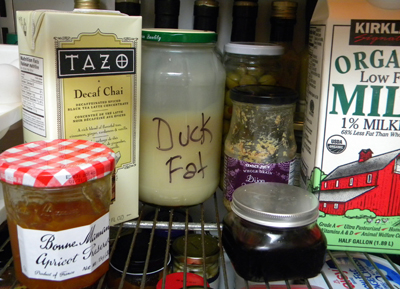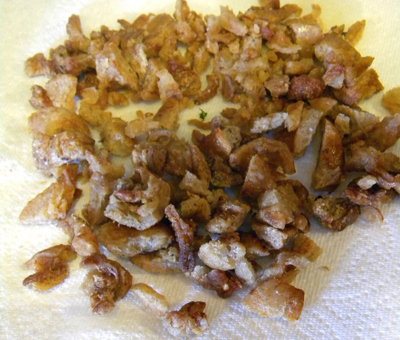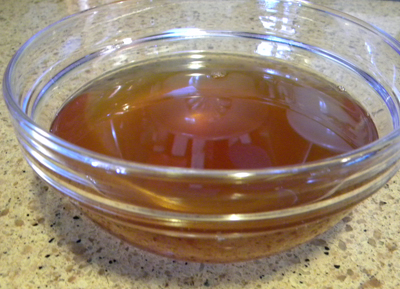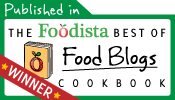lucky duck
One of the countless benefits of working at a world-class cooking school is the goodies I get to bring home. Not only delicious leftovers but in most cases, what I even appreciate more are the by-products of the food made there. The chicken, beef, and veal bones; extra produce that was purchased but not used; even homemade puff pastry that a chef made as a demo and then left behind. Earlier this week was the last class of the season and I hit the mother load; lobster shells and duck skin. Today we will use the duck skin and in the following days I will show you how to make priceless lobster stock and lobster oil, and then use those to make lobster risotto, YUM!
The transformation of duck skin is magical. The fat, skin, and water morph from something nasty looking into a gorgeous amber liquid. And those nasty pieces transform from white, flabby, fleshy chunks into crispy little bits called cracklings.
You end up not only with the precious duck fat but also with a batch of cracklings. Drain and sprinkle generously with salt and use as croutons on soup or salad, sprinkle atop sautéed greens or risotto, eat as a tasty little snack, or honestly, just throw them away, if you are so inclined. It’s the fat you really want here.
Basically, you use the fat the same way you would use butter or olive oil. Try it with roasted potatoes or to sauté greens or vegetables. Or use it the way the French do… duck-fat pomme frites (French fries) are legendary, and for good reason, you will think you’ve died and gone to heaven!
Rendering Duck Fat
Cut skin and fat from a whole duck or duck breasts into medium pieces and place them into a medium heavy-bottomed pot. Add 1/2 cup water and simmer over medium-low heat until all of the water evaporates and the skin pieces have released all their fat and are crisp about 1 hour.
Strain the clear amber liquid fat through a fine sieve. Store duck fat in a sealed jar, in the refrigerator, for up to 1 year.









0 comments
Kick things off by filling out the form below.
Leave a Comment